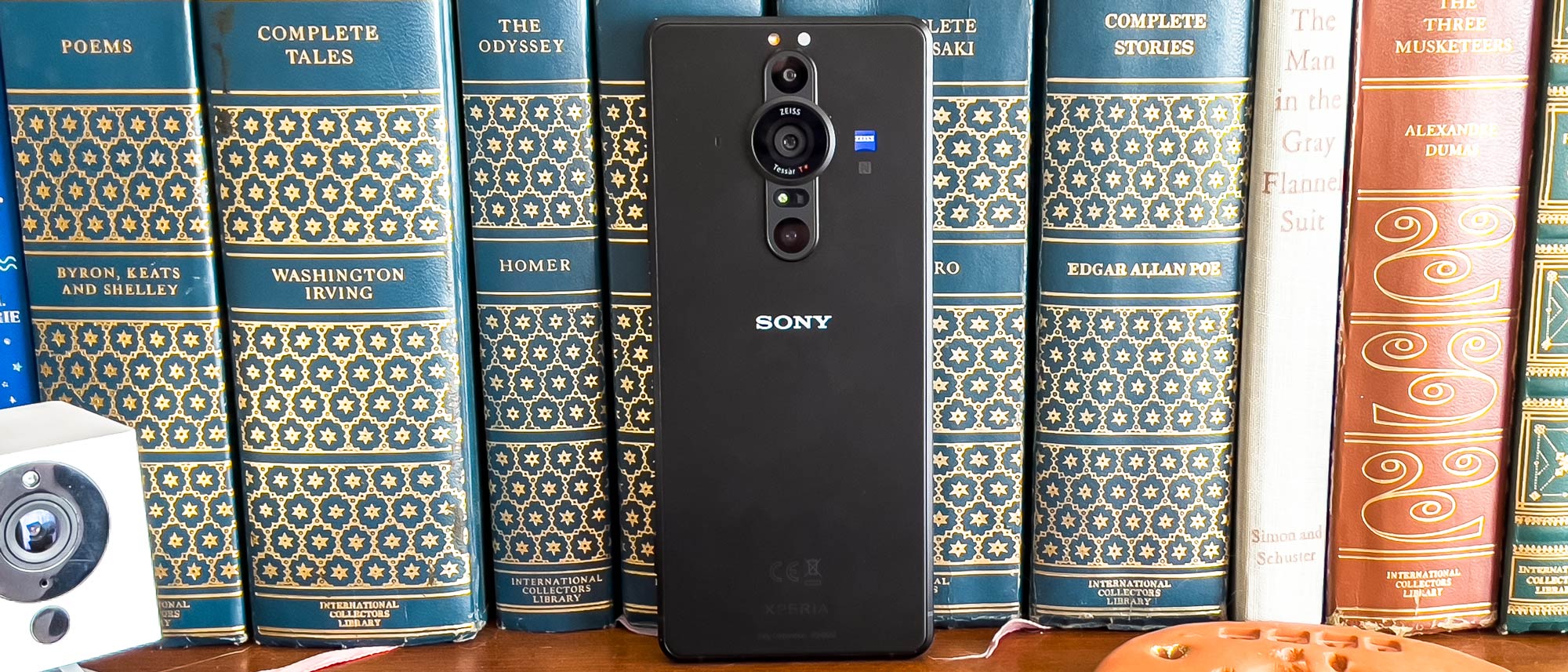Tom's Guide Verdict
Sony’s Xperia Pro-I goes all-in on pro-level imaging, but can’t match less expensive camera phones like the iPhone 13 Pro Max or Pixel 6 Pro. And it suffers from lackluster battery life, a dim display, and an unintuitive pro app user experience.
Pros
- +
Powerful imaging capabilities
- +
Excellent audio
- +
High-res display
Cons
- -
Ridiculously expensive
- -
Unintuitive pro app user experience
- -
No mmWave 5G or wireless charging
- -
Subpar battery life in 120Hz mode
- -
Cameras not better than cheaper phones
Why you can trust Tom's Guide
Price: $1,799
Android version: Android 11
Display: 6.5-inch OLED (3840 x 1644)
Refresh rate: 120Hz
CPU: Snapdragon 888
RAM: 12GB
Storage / Expandable: 512GB / Yes
Rear cameras: 12MP (f/2.0-4.0) main, 12MP (f/2.2) ultrawide, 12MP (f/2.4) 50mm/2.1x telephoto
Front camera: 8MP (f/2.0)
Video: Up to 4K 120 fps HDR
Battery: 4,500 mAh
Charging: 30W
Battery life (Hrs:Mins): 7:05 (120Hz), 9:08 (60Hz)
Size: 6.54 x 2.83 x 0.35 inches
Weight: 7.4 ounces
Sony has never had what you would call a rational idea of what a smartphone should cost. Its Xperia line of handsets has achieved meme status for how expensive some of its models have been. Even now as smartphone technology advances to the next big thing, Sony likes to think its Xperia mobile brand can command a hefty price tag, and the new Xperia Pro-I is no different.
Sony targets professional photographers and videographers with the Xperia Pro-I. There’s some serious camera hardware onboard here, including a 50mm (2.1x optical zoom) telephoto lens and the choice between f/2.0 and f/4.0 apertures on the main camera.
But at a jaw-dropping $1,799, the Pro-I is laughably bad in some areas. A phone that costs as much as the Samsung Galaxy Z Fold 3 but doesn’t have mmWave 5G, wireless charging, or a display that exceeds 400 nits of brightness? I’m floored by how madly Sony has misjudged the value the Xperia Pro-I provides.
While this device isn’t for the typical smartphone buyer, our Sony Xperia Pro-I review finds a phone that can’t meet the expectations of its niche audience.
Sony Xperia Pro-I review: Price and availability
The Xperia Pro-I comes in one configuration with 512GB of storage and 12GB of RAM. That’s pretty high-end in Android land, but you’ll have to drop $1,799 to get that privilege. For reference, that’s what the base 256GB Galaxy Z Fold 3 costs. At least that’s a whole new form factor with a foldable screen.
Should you wish to, you can buy the Pro-I from Sony directly or through various retailers like Amazon.
Sony Xperia Pro-I review: Cameras
The Xperia Pro-I sports a triple 12MP sensor setup, including a 50mm telephoto lens. That comes out to 2.1x zoom, based on the camera app. And around front, the Xperia Pro-I features a 8MP selfie camera.
Get instant access to breaking news, the hottest reviews, great deals and helpful tips.

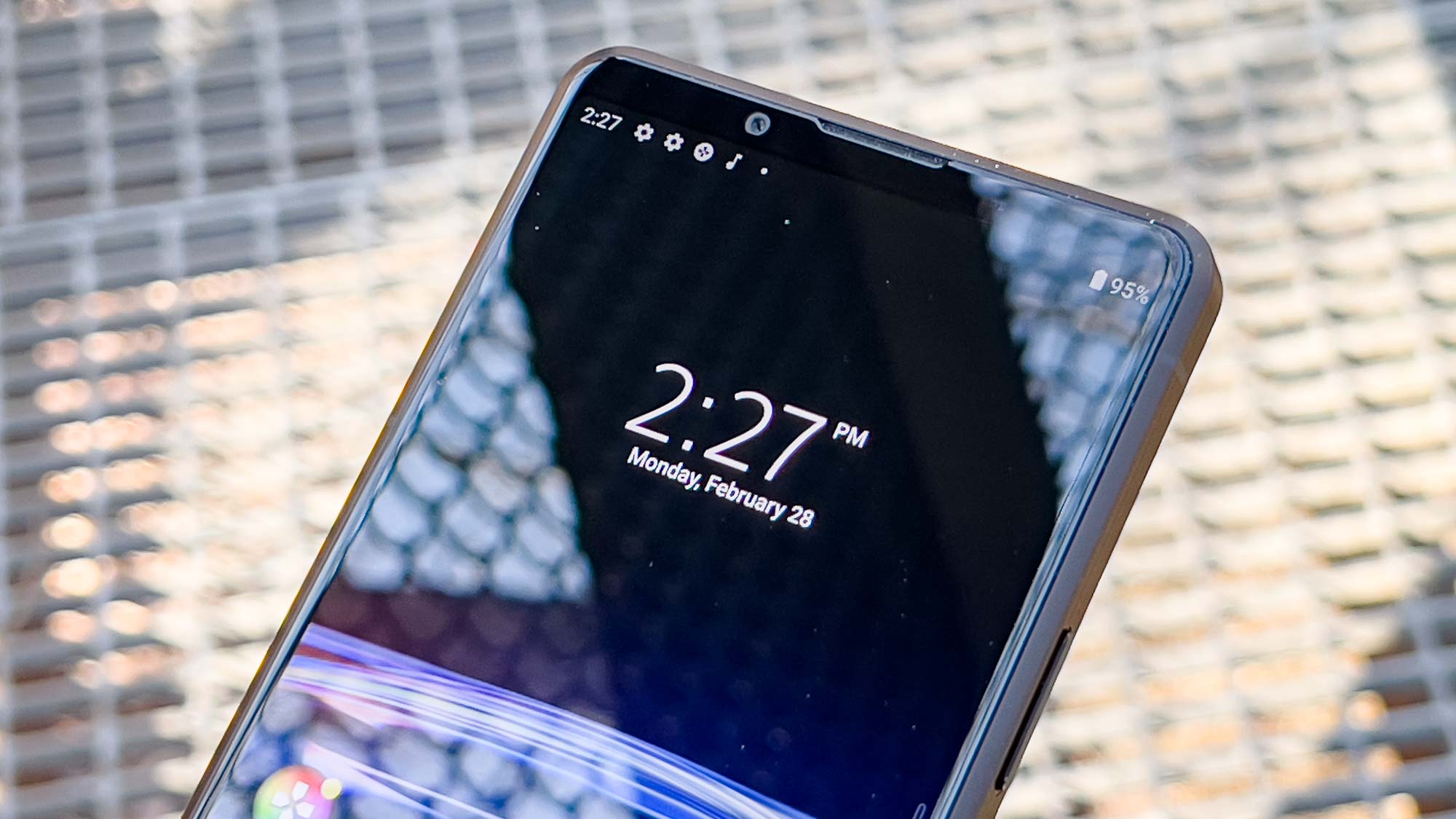
I brought out the iPhone 13 Pro Max for comparison, which currently tops our picks for the best camera phones. For the first shot, I took both phones to a mural in my neighborhood, which has a variety of whites and grays, plus some red. The Xperia Pro-I kept the colors toned down, almost muted. The iPhone boosted the reds and blues a bit to make the image more visually appealing. To the common eye, the iPhone’s shot would probably be preferable, but Sony’s could be tweaked in editing. Then again, you could say the same for the iPhone.
In this second outdoor shot looking down a bridge, both photos look rather similar at first glance. But look deeper and you’ll see that the Xperia Pro-I produced a warmer image with less yellow than the iPhone did. I think the iPhone 13 Pro Max overcompensated for the direct mid-afternoon sunlight, leaving the Xperia the victor in this situation. Sony’s phone also produced more natural colors.
Inside, the differences between the two images jump out immediately. The Xperia Pro-I produced a bland and dim image compared to the iPhone, which brightened up the scene considering the low light on the dark side of the house. The Xperia’s focus also seems way too soft, which you can see with some of the book titles. It’s an interesting comparison, but the iPhone 13 Pro Max clearly wins in this situation.
For another indoor shot, I tasked both phones to photograph these produce stands. With daylight on the other side and harsh fluorescent lighting above, the challenge proved beyond both phones’ abilities. Either image looks pretty dingy with bland colors and poor exposure. This is a steep challenge for any camera, but neither phone came out ahead.
The telephoto test compared the Xperia Pro-I’s 2.1x optical zoom to the 3x max of the iPhone 13 Pro Max. Shooting the same mural as before, the Xperia Pro-I produced softer colors than the iPhone, while also failing to give the same sense of detail. The iPhone’s image, distance notwithstanding, has better colors and richer details in the bricks and the way the light hits the paint. Even if the Xperia had the same 3x optical zoom as the iPhone, I think the latter would still win in this test with default settings.
To test the ultrawide lens on each phone, I grabbed this shot of the front of a grocery store. The Xperia did very well here, properly compensating from the sunlight while producing bright colors in the purple sign and blue sky. The iPhone’s shot isn’t bad, but I think Sony won this ultrawide comparison.
The portrait test proved interesting, since the iPhone 13 Pro Max struggled with exposure and tone. The Xperia Pro-I zoomed out a bit more on the image, but produced something that was warmer and better lit overall. It’s hard to make out my finer details in either image because of the challenging lighting conditions, but the Xperia has a better photo.
The night mode comparison is really not much of one at all. The Xperia Pro-I acted like it didn’t recognize the low light with an image so dark, you can barely see the smoker in my backyard. The iPhone produced a clearer image that, though fuzzy, shows far more details than the Xperia managed.
Finally, for the selfie test, the Xperia Pro-I seemed to struggle with overexposure given the direct sunlight. My beard is certainly redder and my hair blonder than the iPhone’s selfie, but the background is a little more blown out in contrast. The iPhone 13 Pro Max adjusted the image pretty well given the harsh light and it’s the selfie I’d prefer to post if I had to choose.
Sony probably doesn’t expect you to go with the photos the Xperia Pro-I processes on-device, nor does it anticipate that you’ll be content with the auto settings. The manual controls are easy enough to work with, certainly easier than either of the video apps.
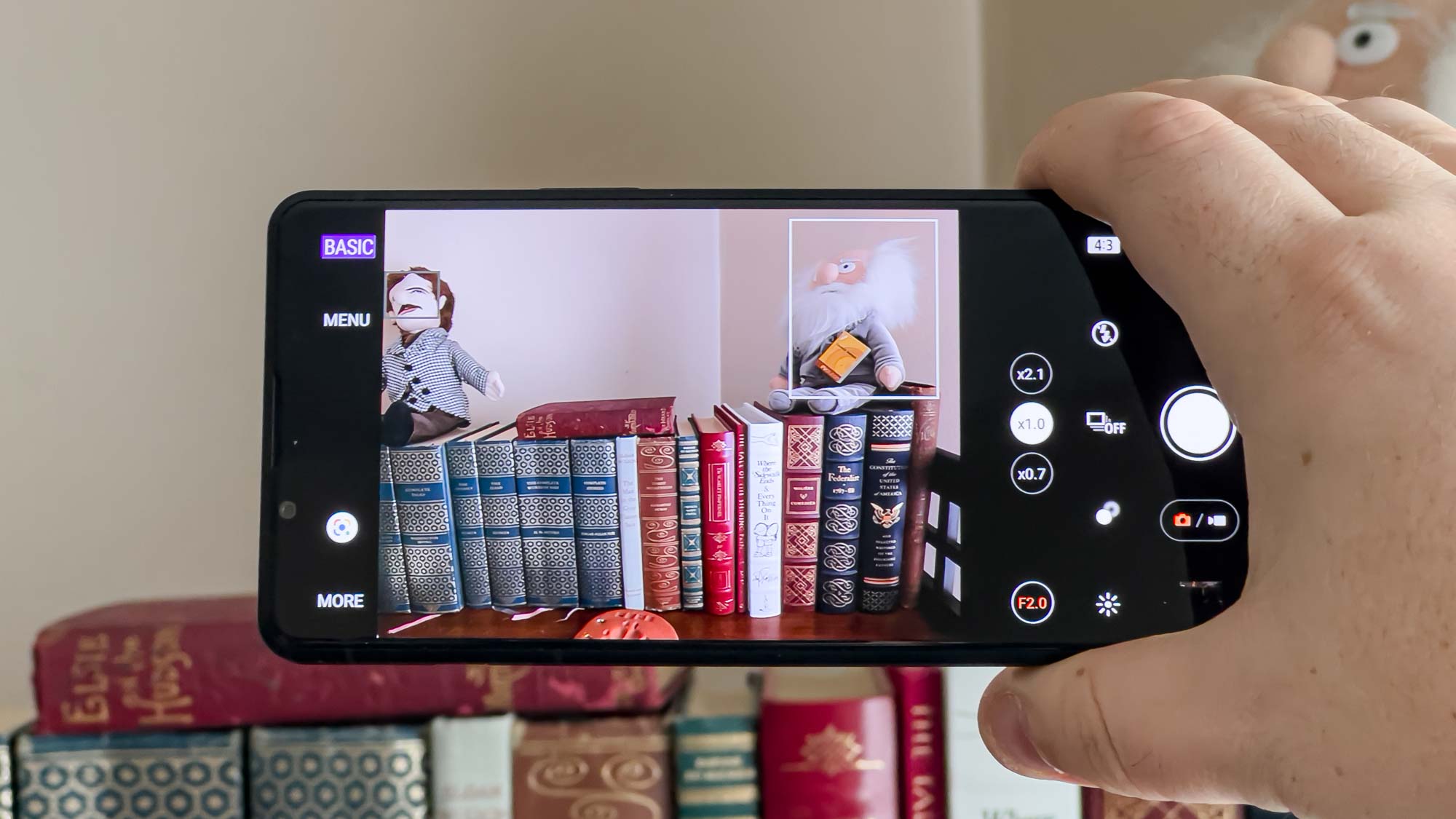
Instead, you’ll probably head into an app like Lightroom to adjust things to your liking in post-processing, but for photos using default settings with no editing, the iPhone wins in most scenarios. That’s kind of hard to swallow given that Sony’s camera-focused phone costs $700 more than the iPhone 13 Pro Max while lacking the polish of Apple’s device in other areas (as we’ll soon see).
Sony Xperia Pro-I review: Display
One of the defining characteristics of an Xperia phone is the unusually tall display.
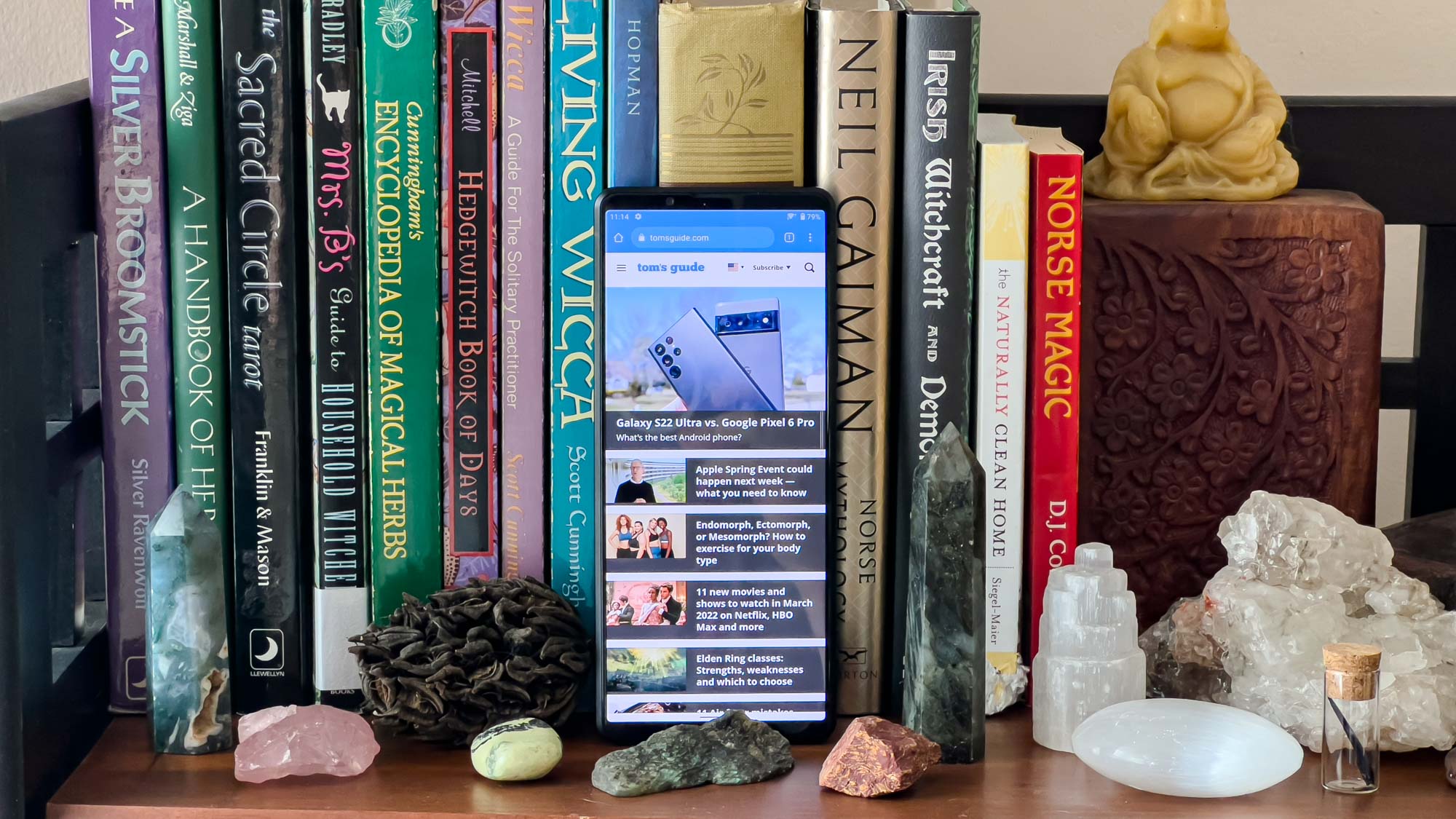
Sony has gone this route for a long time now, but it doesn’t look any less odd when compared to a more traditional smartphone design. The Pro-I has a 6.5-inch OLED 120Hz screen with an impressive 3840 x 1644 resolution. That’s a lot of pixels packed into this display.
| Header Cell - Column 0 | Xperia Pro-I | Pixel 6 Pro | iPhone 13 Pro Max |
|---|---|---|---|
| sRGB (%) | 138 | 104 | 109 |
| DCI-P3 (%) | 98 | 74 | 77 |
| Delta-E | 0.25 | 0.3 | 0.21 |
| Brightness (nits) | 342 | 842 | 1,038 |
The Pro-I’s screen is nice enough indoors, but in our testing, it only reached a max of 342 nits of brightness. That’s incredibly dim for a phone that costs this much. The iPhone 13 Pro Max gets more than 1,000 nits and the new Galaxy S22 Ultra hit 1,359 nits in our testing (with a rated max of 1,750 nits). You can see both those phones’ displays clearly in bright sunlight; the Pro-I can’t make the same claim.
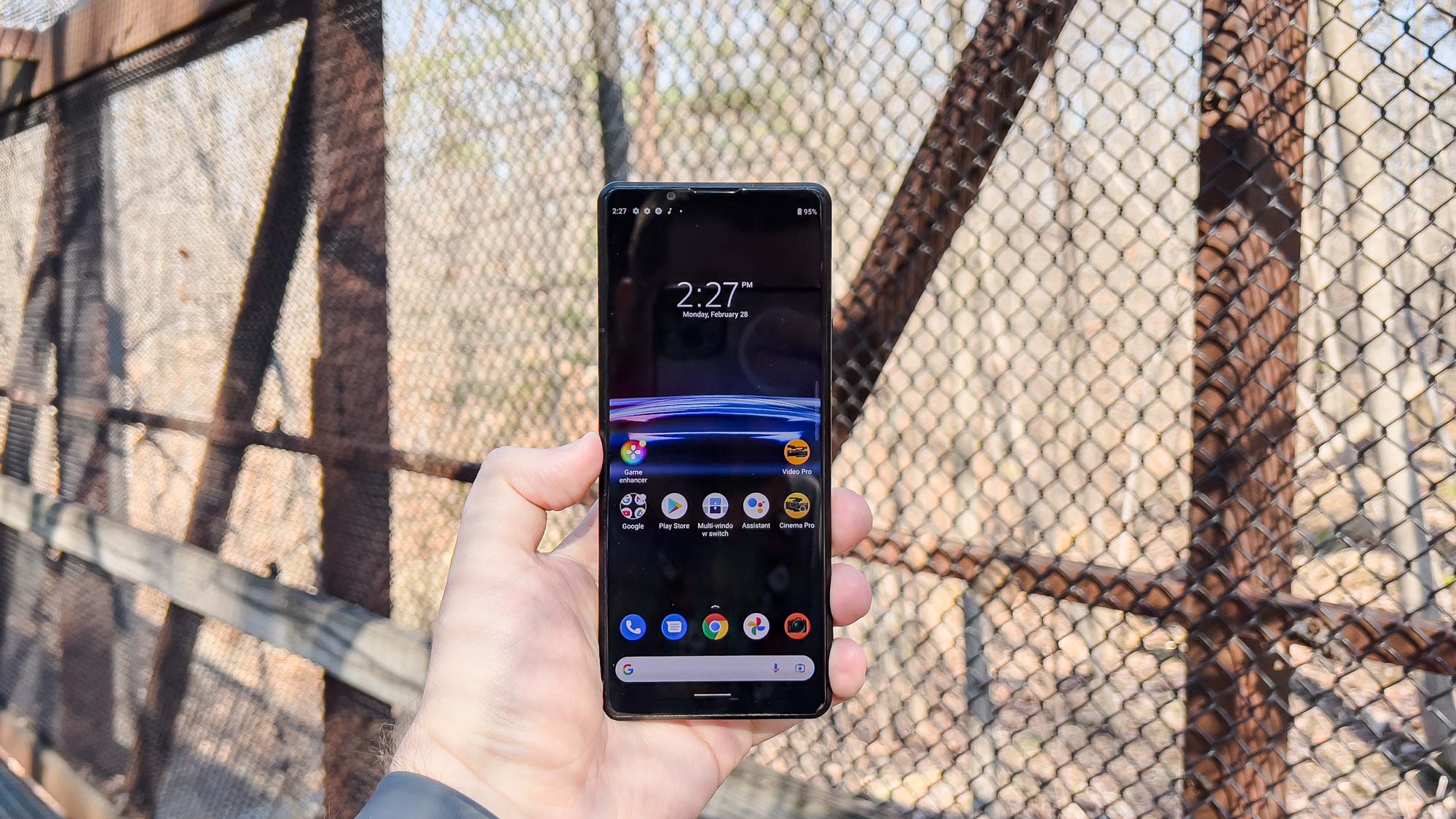
And that’s disappointing because, otherwise, the Pro-I’s display is good. Its Delta-E color accuracy score is a nice 0.25 (0 is perfect), and the Pro-I can reproduce 98% of the challenging DCI-P3 color gamut. All that equals more realistic colors for viewing and editing your photos, something that I think works in the Pro-I’s favor.

Compared to other phones that cost hundreds of dollars less, the Xperia Pro-I’s screen is on par other than its brightness, especially for its color accuracy and reproduction. I think it’s more than passable for viewing photos, which is the important piece — so long as you’re indoors or in the shade.
Sony Xperia Pro-I review: Software, battery life and other features
Software: The Xperia Pro-I features a version of Android 11 — Android 12 just started rolling out during the course of writing this review — that’s pretty close to stock on the surface, but with a lot of preinstalled garbage like Facebook, LinkedIn, and a Tidal trial. Sony’s software support can be a bit suspect sometimes, but at least Android 12 is on its way. Otherwise, the system is pretty unobtrusive. But Sony’s pro apps are another story.

I’ll be the first to admit that I’m not a professional photographer or videographer, but I found the Cinema and Video Pro apps quite unintuitive. Even the Photo Pro app took some getting used to. Granted, this phone isn’t meant for the layperson, but that doesn’t excuse poor design like settings buried in convoluted areas. I understand that Sony wanted to give an “authentic” experience that professionals might feel more at home with, but I think most people have grown accustomed to how smartphone photo/video apps are laid out nowadays.

I think Sony could have done a much better job with these apps, perhaps by better nesting settings and tweaks better. Some options like the manual controls feel like a pain to get to, and I only adjusted some things slightly like ISO and white balance.
Battery life: One place the Xperia Pro-I really struggles is battery life. In the Tom’s Guide battery life test — a benchmark where we set a phone’s display to 150 nits of brightness and then task the device to endlessly reload web pages until it dies — the Xperia Pro-I barely exceeded 7 hours (7:04) in its 120Hz mode. At 60Hz, the phone held out a bit longer at 9 hours and 8 minutes, though that’s still nearly an hour behind the average phone.
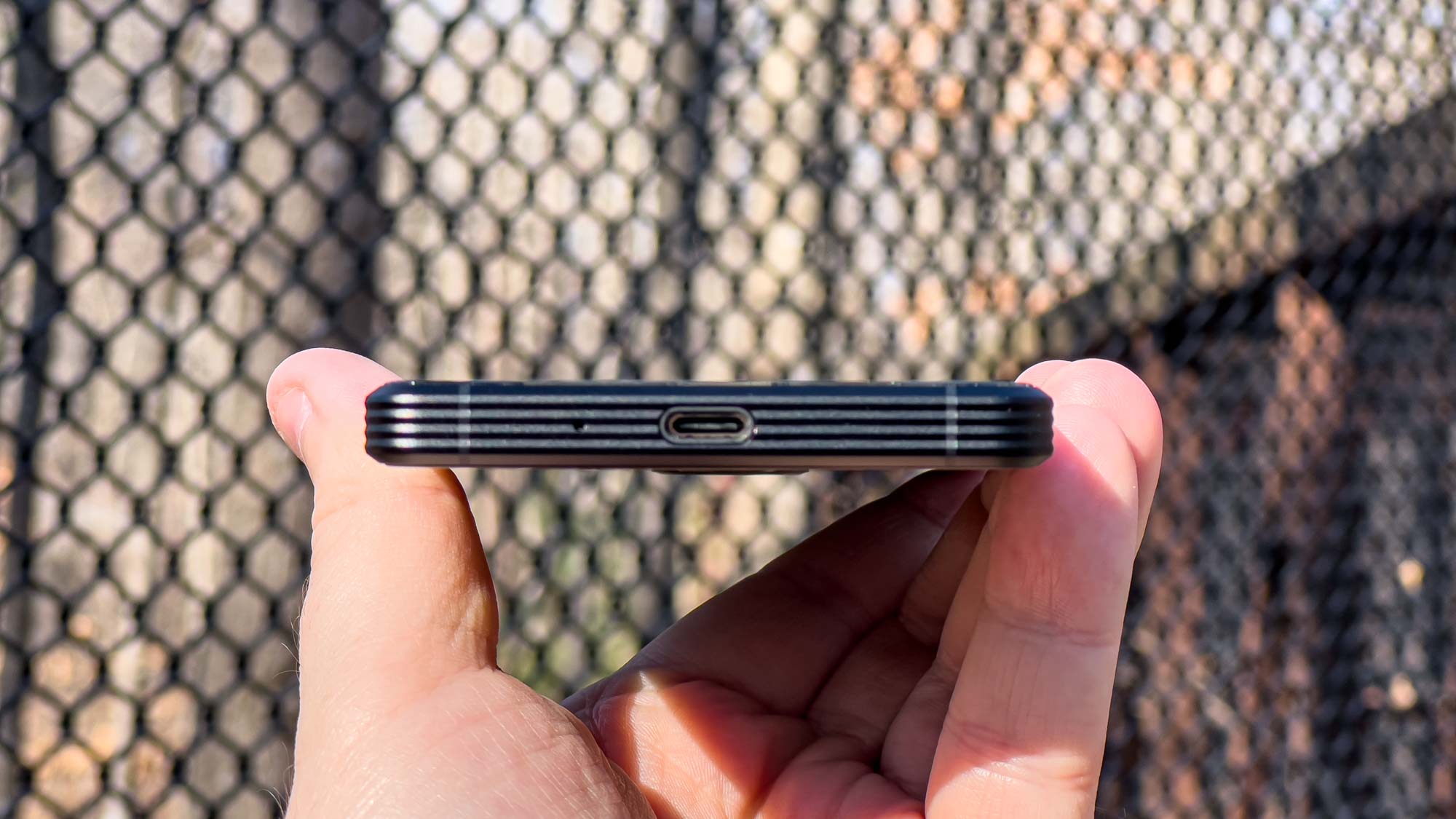
The only other modern Android phone that performs that poorly is the Pixel 6 Pro at 7 hours and 49 minutes in its 120Hz mode. The current king of Android camera phones also struggles, but it goes for 45 minutes longer than the Xperia Pro-I.
And then there’s the iPhone 13 Pro Max at a whopping 12 hours and 16 minutes. Considering that that is our pick for the best camera phone, it’s a wonder why you’d opt for the Xperia Pro-I should you want a capable camera phone that’ll last for several hours of photography.
Special features: The Xperia Pro-I features two extra buttons alongside the power button and volume rocker. One is a shortcut key that you can map to any app. By default, it launches the Video Pro app, but you can set it to the camera app or whatever you have installed. Next to that is a shutter button, which is very handy while you’re taking photos or videos.
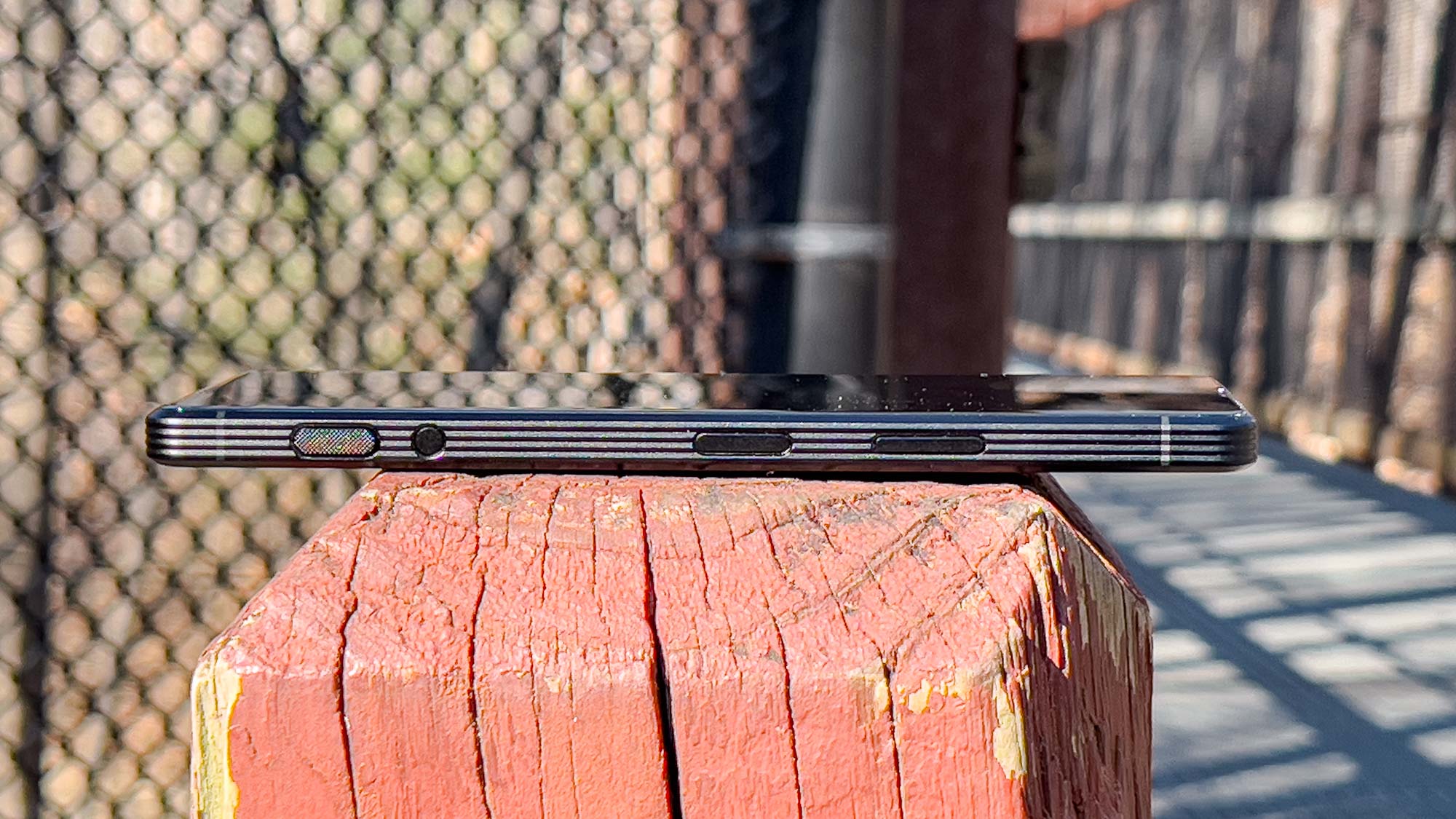
Another area I think the Xperia Pro-I shines is the speaker quality. These are very nice phone speakers, certainly on par with anything else on the market. Listening to my favorite music on the Pro-I was just as good as my iPhone 13 Pro Max. In some ways, the Xperia Pro-I’s speakers are richer and fuller, with stronger and warmer bass than Apple’s. You can set up Dolby Atmos and 360 spatial audio, and there’s even support for an AI DSEE Ultimate upscaler for compressed music.
Sony Xperia Pro-I review: Verdict
The Xperia Pro-I is an interesting phone to review since it’s not really meant for most people — its price tag assures that. But its high cost creates expectations the phone can’t match. The display, while having great color accuracy, is so dim that you can hardly see your photos outdoors. The battery life is just outright bad, practically inexcusable for a $1,799 phone.
The Xperia Pro-I can shoot some nice pictures, sure, but when compared to the iPhone 13 Pro Max, it’s not all that much better. In fact, the iPhone beat the Xperia in several comparisons, especially in the night mode test. I imagine the Pixel 6 Pro — our favorite Android phone for taking pictures — would hold its own as well.
I don’t think anyone should buy the Xperia Pro-I. If you’re a professional photographer or videographer, you likely have your own dedicated equipment that can do a lot more than this phone could dream of doing. And if you’re a hobbyist, there are better phones (like the iPhone 13 Pro Max or Pixel 6 Pro) that can accomplish many of the same feats while costing far less.

Jordan is the Phones Editor for Tom's Guide, covering all things phone-related. He's written about phones for over six years and plans to continue for a long while to come. He loves nothing more than relaxing in his home with a book, game, or his latest personal writing project. Jordan likes finding new things to dive into, from books and games to new mechanical keyboard switches and fun keycap sets. Outside of work, you can find him poring over open-source software and his studies.
